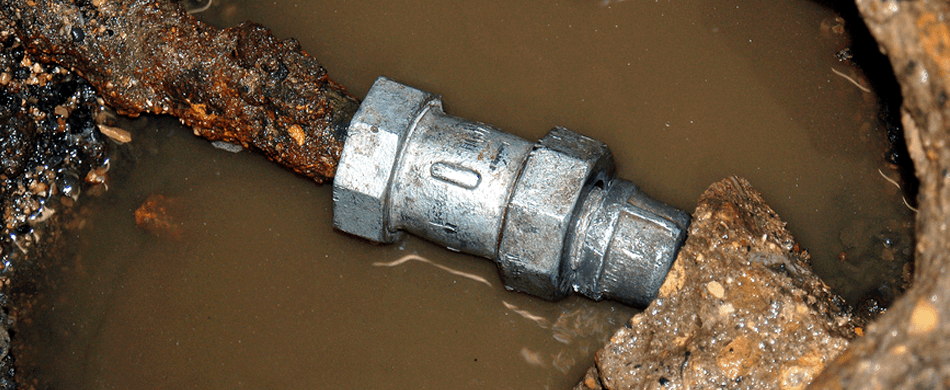A good sump pump, tied to a properly installed, working foundation drainage system is a homeowner’s first line of defense against basement flood.
Below are the most common types of sump pump failure, and what you need to do to prevent them.
1 – Overwhelmed Sump Pump
Sometimes a single sump pump just isn’t enough to handle the job. Sometimes the pump is simply not powerful or reliable enough. Plastic, cheap sump pumps for example, often can’t keep up with the high volume of water that pours in, especially during heavy rains. It will burn out or fail to pump water as quickly as needed.
Upgrading your sump pump and adding a battery backup sump pump to the system, usually solves this problem. In some rare cases you might need more than one sump pump and a back-up system, installed in different corners of the basement.
2- Pump Works, but There Isn’t Any Water Coming Into the Sump Pit
This is a classic sign of an improperly installed sump pump. Many contractors install a sump pump in the basement but do not link it to a drainage system.
A sump pump only works properly if there is a drain tile installed externally or internally, along the internal perimeter of the basement. The drain tile collects all the ground water from around the foundation, and relies on gravity to channel and discharge it into the sump pump. If the drain tile is clogged, collapsed, inexistent, or just not installed with the proper pitch, it won’t divert the water to the pit, and the best sump pump in the world will not keep your basement dry.
3- Clogged Sump Pumps and Switches
Sump pits that do not have a lid can easily fill with dirt and debris which can cause a sump pump to clog. Likewise, if you have a sump pump that sits straight against the bottom of a dirty sump pit it’s mechanical parts are liable to clog with dirt and debris. If this interferes with the pump’s operation, the system will slow or stop.
This same debris can cause the “float switch,” which causes the pump to turn on and off as the water level in the pit changes, to clog or jam as well.
If these switches clog, become jammed, or (in the case of cheap sump pump models) become tangled in the rest of the system, the sump pump switch will either stop working entirely or be stuck in the “on” position, meaning that it will run nonstop.
Our sump pump systems include a sump container with an air tight sealed lid that will not only prevent debris from falling in it, it will also keep small children and pets safe and the water from the pit from evaporating back into your basement. The system also includes a pedestal that keeps the sump from coming in contact with the bottom of the container, which is where the silt accumulates.
4 – Sump Pump Running Non-Stop
Sump pumps that run continuously, non-stop, or way too often, regardless of the weather conditions or season, may be a sign of different problems, all of which need to be addressed before the pump burns out.
- Stuck sump pump switches
The float switch becomes clogged, jammed, or the switch becomes tangled in the system. In some cases, the vibrations of the sump pump as it runs can cause it to begin to lean on the edge of the sump pit or liner, disabling the sump pump switch. - The Sump Pump Liner and/or the Liner are too small or too big.
In some cases the sump pump is just not big enough to handle the job, so it runs continuously to keep up. In other instances, the pump may be powerful enough, but the sump pit is so small, and fills up so quickly that it triggers the sump pump to work more often than it should - The check valve is missing or broken.
Because the sump pump is installed below grade, the discharge line goes upwards until it can exit the basement at some point above grade, when the pipe is then pitched downhill, relying on gravity to discharge the water. The check valve, installed in the discharge line, prevents the water from coming back into the pit before it reaches the point in which it begins to roll downhill. A broken or missing check valve will cause 1/3 to 2/3 of that water to flow right back into the pit, overworking the pump. - Continually flooding sump pit.
In very rare cases, there is just a continuous flow of water into the sump pit due to a high water table or an underground spring. If the water table is too high, raising the sump pit a bit might help. Upgrading the system or adding an extra sump pump on another corner of the basement might help.
If the sump pump is running non-stop under normal conditions, there is a chance that it will fail when you need it most: during a heavy rain.
Request Sump Pump Install or Repair.












